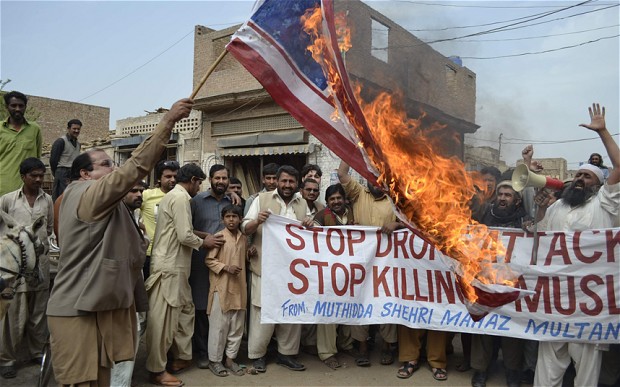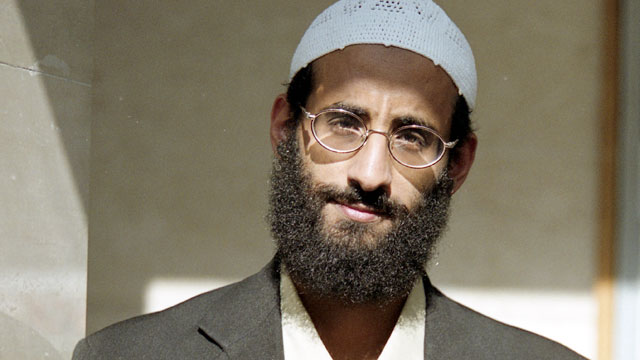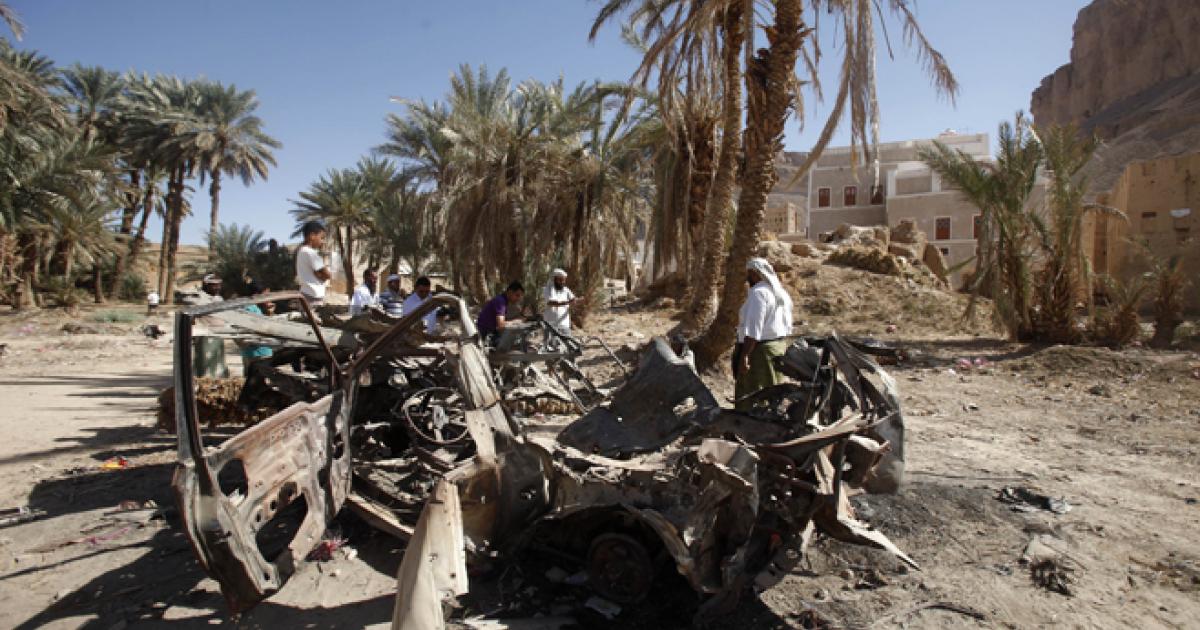The world watched in horror this week as Donald Trump dominated the polls on Super Tuesday, beating rival Ted Cruz in seven states and causing Ben Carson to pull out of the race. This has stoked panic in the hearts of many, not only within the GOP and USA, but around the world, as we consider what a future with President Trump would look like.
Many have cited Trump’s divisive rhetoric and its implications for minority communities and immigrants as his greatest threat, while others fear more his lack of consistency on both domestic and foreign policy matters. But one particular danger has been largely ignored by critics and analysts. The US targeted killing program, which has carried out attacks against enemy combatants abroad through the use of drones in the years since 9/11, would be particularly lethal in the hands of someone like Trump, with potentially devastating global consequences.
 Trump celebrated victory in seven states on ‘Super Tuesday’ (image: Vice News)
Trump celebrated victory in seven states on ‘Super Tuesday’ (image: Vice News)
The US targeted killing program rose from the ashes of 9/11 and George W. Bush’s ‘War on Terror’. The program has proliferated under the Obama administration, which carried out 357 of the 408 drone strikes launched by the US between 2004-2014. The Bureau of Investigative Journalism estimates that the program killed between 2,410 and 3902 people during this period, many of whom were innocent civilians, including women and children.
The targeted killing program has been widely criticised for its dubious legal basis. Scholars, lawyers and human rights groups have accused the Obama administration of exploiting the ambiguities of international law in order to justify the killing of foreign nationals abroad. They argue that the administration’s distinction between combatants and civilians is highly blurred, particularly in the case of “signature strikes”. Such strikes remotely identify targets according to patterns of behaviour, effectively deeming any military-age male within a combat zone a legitimate target. This is particularly problematic in Yemen, the second most heavily armed country in the world (after the USA), where the presence of weapons does not necessarily identify individuals as terrorists.
 Activists burn the US flag during a protest against drone strikes in Pakistan (image: The Telegraph)
Activists burn the US flag during a protest against drone strikes in Pakistan (image: The Telegraph)
One of the biggest controversies surrounding the program emerged in response to the killing of Anwar al-Awlaki and his sixteen-year-old son, two American citizens targeted in Yemen in 2011. Critics argue that drone strikes against American citizens are illegal as they bypass the Fifth Amendment of the Constitution, which guarantees every citizen a right to due process.
The administration attempted to justify the legality of the strikes by claiming that Awlaki posed an “imminent threat” to the United States, but refused to provide evidence of this threat on the basis of national security. Many have argued that such strikes expand the concept of “imminence” beyond recognition, given that targeted killing, by its very name, suggests an entirely premeditated military force. In fact, rather worryingly, the administration itself admitted in a White Paper on the subject that the President “does not require that the US have clear evidence that a specific attack… will take place in the immediate future”.
The judicial system has also shown limited willingness to hold the administration accountable for the unconstitutional nature of these strikes. Awlaki’s father sought legal action, bringing cases against Obama and the CIA. However, these cases were thrown out of the court, which claimed that to litigate such a matter would encroach on the power of the executive.
This clearly demonstrates the extreme power that the targeted killing program concentrates in the hands of the American President. Obama is effectively responsible for creating a hitlist, deciding who will be targeted and when, regardless of the legal limits – and all this with little or no transparency or accountability. This alone is worrying enough, but imagine such a power in the hands of a President Trump…
 Anwar al-Awlaki and his 16-year-old son were killed by US drones in Yemen in 2011 (image: The Commentator)
Anwar al-Awlaki and his 16-year-old son were killed by US drones in Yemen in 2011 (image: The Commentator)
Not only is the program arguably illegal, but it has also been shown to be politically ineffective and sometimes counterproductive. The high rate of civilian casualties caused by drone strikes has elicited hatred and resentment towards the US among local populations, particularly in Yemen, which has been labelled a “terrorist safe haven”. Groups like Al Qaeda in the Arabian Peninsula (AQAP), which is supposedly the most dangerous branch of Al Qaeda, have capitalised on such resentment, incorporating drone strikes into their propaganda narrative and boosting recruitment to their ranks.
One such instance was a strike launched by the US in 2009 in Al-Majalah, Yemen, which killed thirteen AQAP operatives and 41 civilians. Among the dead were nine women – five of them pregnant – and 21 children. According to Human Rights Watch, residents received no explanation or compensation from the Yemeni or American governments. Understandably, the strike generated outrage towards the US and sympathy for AQAP.
So while targeted killing might theoretically be useful as a preventative measure in the face of a genuinely imminent attack, it is by no means a cure of instability and radicalisation in Yemen, and might actually be increasing the likelihood of terrorist attacks over the long term.
 The aftermath of a US drone strike in Khashamir, Yemen in 2012, which killed 3 alleged members of AQAP, a policeman and a cleric who preached against the group (image: Human Rights Watch)
The aftermath of a US drone strike in Khashamir, Yemen in 2012, which killed 3 alleged members of AQAP, a policeman and a cleric who preached against the group (image: Human Rights Watch)
The program also sets a dangerous precedent for the international community. While the US might now have a “monopoly, or effective monopoly on armed drones”, this technology will inevitably spread, running the risk of other states developing this capacity, labelling their enemies terrorists and similarly executing them across borders.
Any future President would therefore have to exercise extreme caution in order to prevent serious global consequences arising from the program’s protracted use.
Many words have been used to describe Donald Trump in recent months. Cautious is not one of them.





